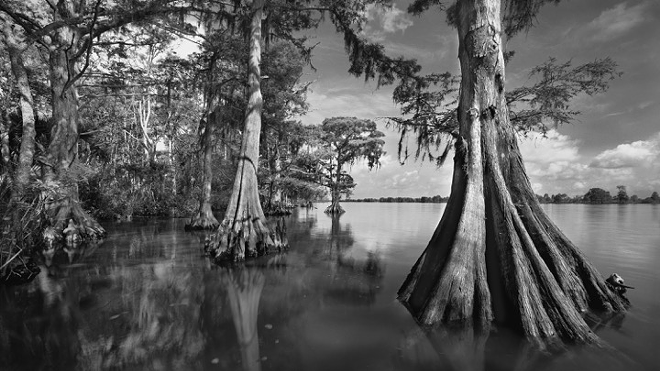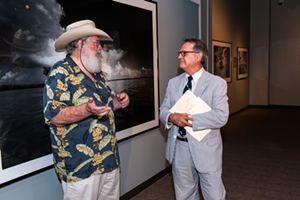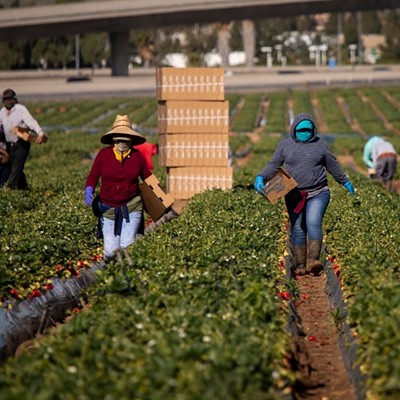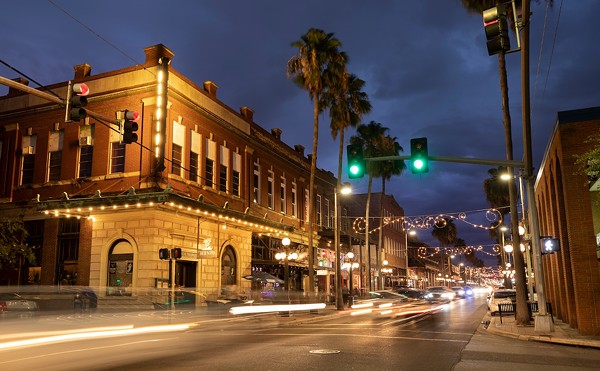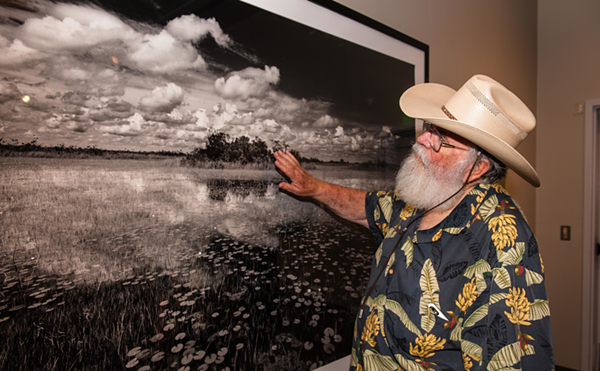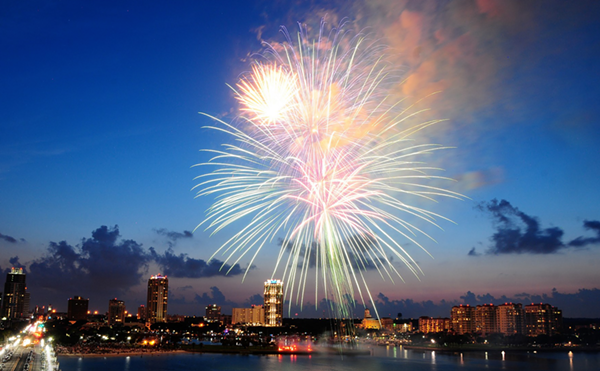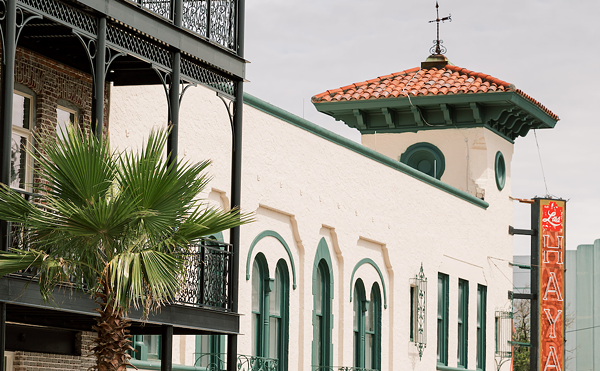He bears an uncanny resemblance to Burl Ives, who played the leader of a villainous gang of bird poachers in the 1958 film A Wind Across the Everglades. He could easily perform a one-person show as a bearded, straw-hatted Walt Whitman; indeed, he seems to belong in the 19th century.
He is Clyde Butcher, a Florida icon. In a state brimming with talented photographers — John Moran, Carlton Ward, Jeff Ripple — Clyde Butcher has been called the Ansel Adams of the Everglades.
Butcher’s odyssey to Florida, like the rivers he reimagined, took a winding path. A native of America’s Heartland, he spent his impressionable years in California. He studied architecture, but designing buildings stirred little creative passion.
In the 1960s, he fell in love and married his muse, Niki Vogel. The Butchers moved from a California commune to trailer campgrounds to a sailboat. He abandoned architecture and became wildly successful as a photographer, cranking out shots that department store customers wanted: settings depicting fog, water, and sunsets. With the help of Peter Gates, the Butchers founded a photo studio employing 200 workers. But he felt something missing.
In 1980, the Butchers crossed the continent, moving to Fort Lauderdale. A year later the family relocated to Fort Myers.
In California and later Florida, Clyde enjoyed success selling photographs at weekend art shows. While he appreciated the starkness and clarity of black-and-white photographs, his customers preferred colors.
In 1986, his world changed. A drunk driver killed his 17-year-old son. Ted’s death devastated the Butchers.
Adrift, the grieving Butcher tossed his collections of prints into a dumpster, vowing to rededicate his life to his son. He realized he had been selling images, not art.
In The Yearling, Marjorie Kinnan Rawlings’s 1938 novel about the hardscrabble Florida Scrub, Penny Baxter explains the world to his son, Jody. “You’ve seed how things goes in the world o’ men. You’ve knowed men to be low-down and mean. You’ve seed ol’ Death at his tricks.”
Penny Baxter “had perhaps been bruised too often,” wrote Rawlings. “The peace of the vast aloof scrub had drawn him with the beneficence of its silence… The touch of men was harmful upon it, but the touch of pines was healing.”
Clyde Butcher found healing and inspiration amid the pines and cypresses, sloughs and hammocks, of the Big Cypress Preserve. And he has channeled his creative energies in his way, on his terms, in black and white.
In Dante’s Divine Comedy, Beatrice guides the author through Heaven. Clyde Butcher’s Beatrice was the real-life Oscar Thompson, a Florida “swamp rat,” who introduced the artist to a world few Floridians or tourists understood or appreciated. Soon, Butcher was lugging large-format cameras, wide-angle lenses, and glass negatives across the Everglades.
Butcher’s moment of clarity occurred while touring Tom Gaskins’s Cypress Knee Museum and boardwalk on Highway 27 in Palmdale. As an architect, he understood depth and proportionality. So, too, he demanded that the viewer get involved and scan the entire picture. “To explain Florida, you need to see the veins of the leaves, not merely the leaves!”
Butcher quickly understood that every single day, cypress sloughs, orange groves, and barrier islands were being developed and lost. His photographs spoke to a sense of loss. He also realized that a 12-foot photograph of Cayo Costa Island or a solitary pine tree along the Loxahatchee Reserve reached audiences with more emotion and wallop than a strident environmentalist screaming at a meeting.
“If you become negative,” he preaches, “you’ve wasted a soul.”
Butcher has been called “Florida’s mad prophet.” His pulpit is not thunderous rhetoric or galvanic prose. Rather, Clyde quickly grasped an elementary point about the power of his medium: a photograph can be a powerful tool. Consider how Matthew Brady’s prints of bullet-ridden soldiers at the Battle of Antietam shocked and saddened, but also inspired and emboldened, Americans. Vietnam may have been America’s first televised war, but a single black-and-white photograph of a naked Vietnamese girl whose village had been incinerated by napalm could not be ignored.
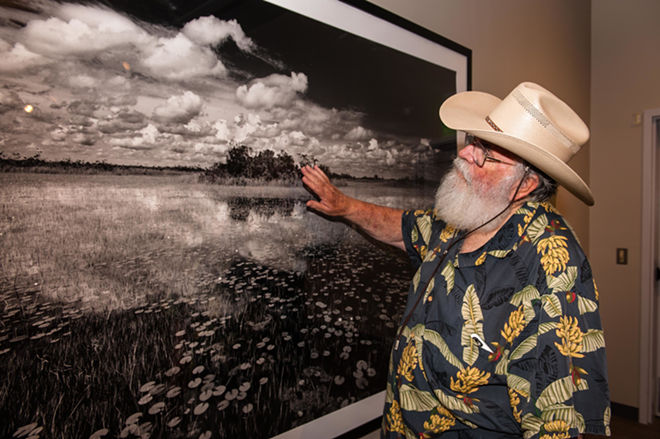
The photograph was given to Marjory Stoneman Douglas on her 101st birthday. For 50 years, she was the voice of the Everglades, hectoring public officials to restore the River of Grass.
But the photograph was not what it seemed. "Ochopee" carried an even more portentous message. The vegetation was not sawgrass, but rather thick clusters of cattails. The lush, densely packed plants signified a polluted landscape, the victim of Immokalee tomato farmers and phosphorous runoffs.
When Clyde presented Carol Browner, the director of the Environmental Protection Agency, the "Ochopee" print, he told her, “This ‘stuff’ in the foreground isn’t supposed to be there. Your job is to get rid of that. It’s a reminder on your wall.”
Niki and Clyde consummated their Florida dream when they purchased Orchid Isles, a kitschy tourist attraction on the Tamiami Trail. Despite the herculean challenges of the federal bureaucracy, physical isolation, and Hurricane Andrew, they built the Big Cypress Gallery and home. Visitors stop to peruse Clyde’s photographs and stroll along the boardwalk for an orchid walk.
When asked what he would suggest to Governor Scott, Clyde responds, “Take a swamp walk!” President Carter and Rosalynn took his advice. “The orchid walk is better than a trip to Disney World,” beams Clyde. He whispers, however, that the Secret Service was very concerned about water moccasins.In A Wind Across the Everglades, Cottonmouth, the Burl Ives character, predicts that when he dies, a seed of a swamp cabbage in his stomach will sprout a tree. May Clyde Butcher photograph that cabbage palm
Gary R. Mormino, the scholar-in-residence at the Florida Humanities Council, received the Florida Lifetime Achievement in Writing in 2015.
Preserving Eden: Clyde Butcher's Florida Photographs:Tampa Bay History Center, 801 Old Waters St., Tampa, through Jan. 8. Mon.-Sun., 10 a.m.-5 p.m., 813-228-0097, tampabayhistorycenter.org.
Big Cypress Gallery, 52388 Tamiami Trail E. (U.S. 41), Ochopee. Open 7 days a week, 10 a.m.-5 p.m., 239-695-2428.

